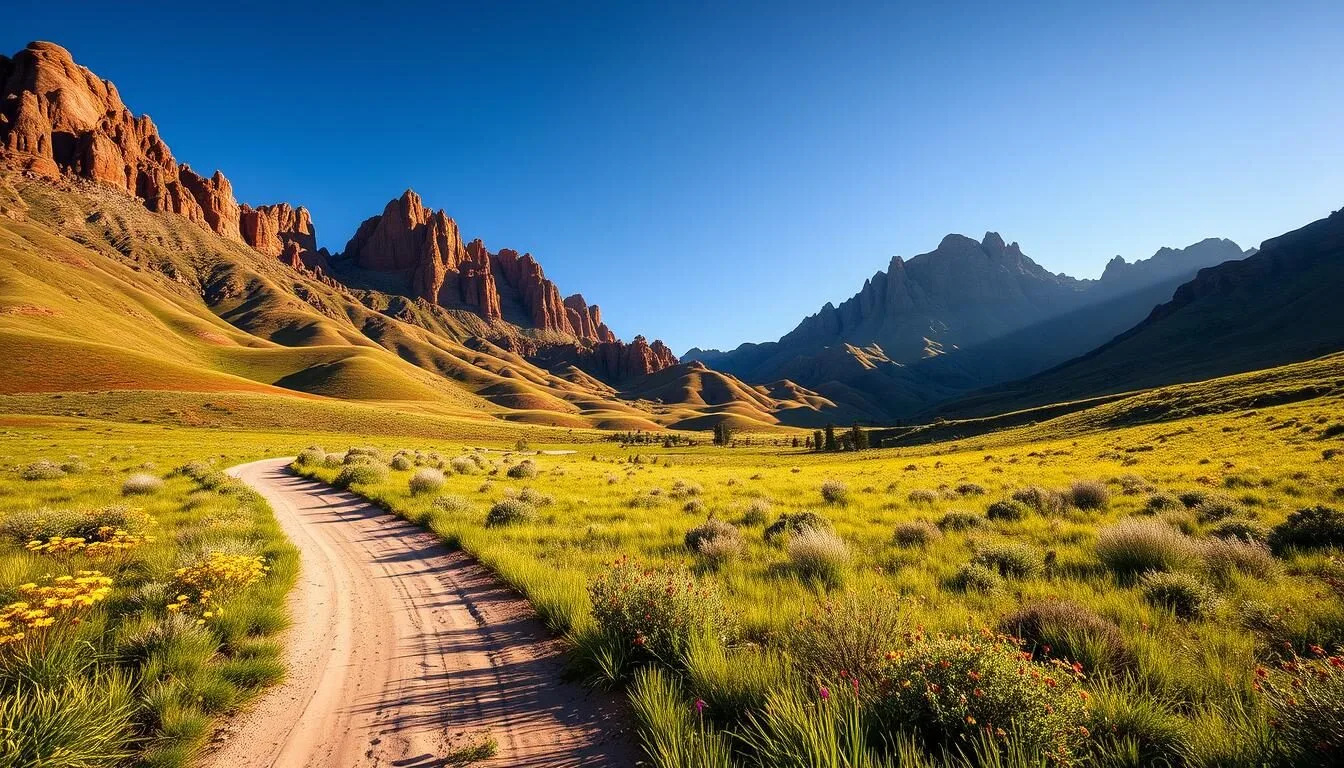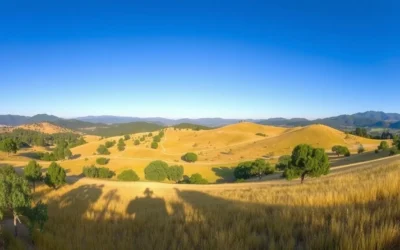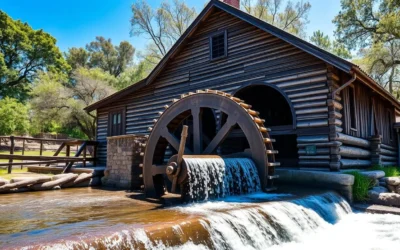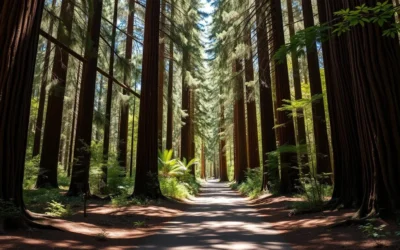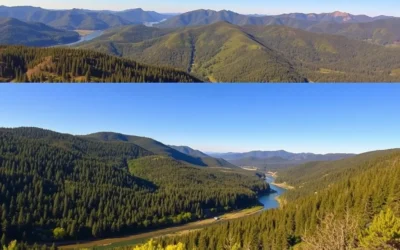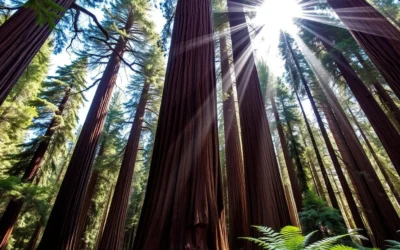✓ Accommodations✓ Flights✓ Rental Cars
Nestled in Tuolumne County, the Red Hills Mountains offer a unique outdoor experience with their distinctive reddish landscape and serpentine-based soils that support rare plant species found nowhere else in the world.
As you explore this 7,100-acre protected area, you’ll discover opportunities for hiking, wildlife viewing, and photography, set against the backdrop of seasonal wildflower displays. The area’s designation as an Area of Critical Environmental Concern (ACEC) ensures that recreational activities are balanced with conservation efforts to protect the region’s unique ecosystem.
This guide will walk you through the top activities to enjoy in the mountain landscape, from exploring well-maintained trail systems to spotting rare wildlife and plants in their natural habitat. Whether you’re planning a day trip or a larger California adventure, you’ll find that the Red Hills Mountains deserve a spot on your outdoor activity list.
Discovering the Unique Red Hills Landscape
Your trip to the Red Hills Mountains will be a journey through a distinctive and fascinating ecosystem. The area is known for its unique natural beauty, which is characterized by its geological features and diverse wildlife.
The Distinctive Serpentine Ecosystem
The Red Hills are home to a serpentine ecosystem, which is rare and supports a variety of unique plant species. This ecosystem is a result of the area’s geological history, which has created a distinctive landscape.
Best Seasons to Visit Red Hills
The best time to visit the Red Hills depends on your preferences. Here’s a breakdown of the seasons:
| Season | Characteristics | Activities |
|---|---|---|
| Spring (late March to early May) | Spectacular wildflower display, mild temperatures | Hiking, photography |
| Summer (June to August) | Intense heat | Early morning hiking trips |
| Fall | Milder temperatures, golden hues | Longer trail explorations |
| Winter (December to February) | Opportunities to spot bald eagles | Bird watching |
As you plan your hiking trip, consider the season that best suits your preferences.
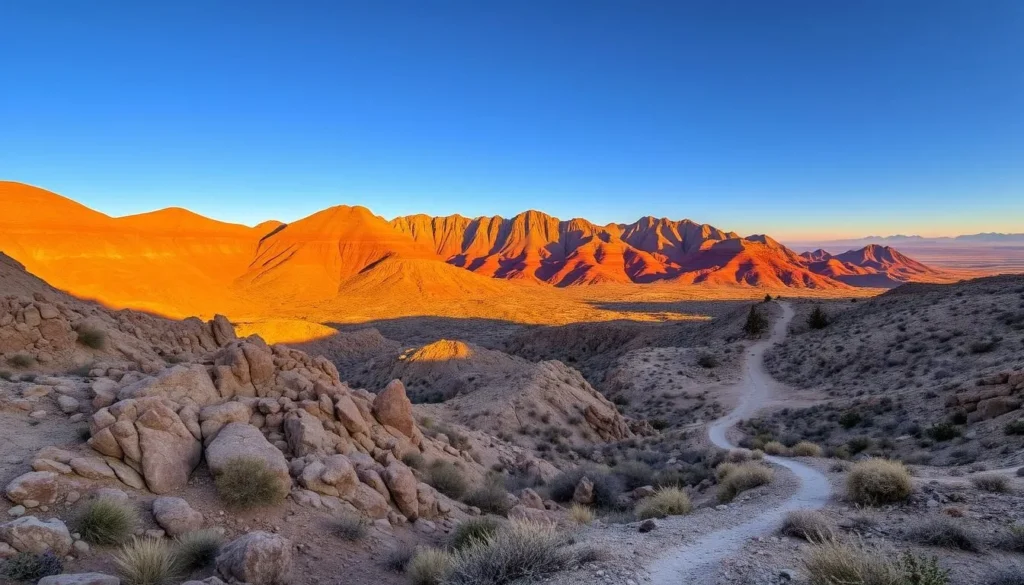
Top Hiking Trails in Red Hills Mountains, California
As you explore the Red Hills Mountains, you’ll discover a variety of hiking trails that cater to different skill levels and offer breathtaking views. The trails are well-marked and easy to follow, making them suitable for hikers of all experience levels.
The Interpretive Nature Trail System
The Interpretive Nature Trail System is a great place to start your hiking adventure. This trail system is designed to educate hikers about the local flora and fauna, with interpretive signs along the way. As you hike, you’ll be surrounded by the beautiful oak woodlands and may even catch a glimpse of the local wildlife. The trail is relatively flat and easy to navigate, making it perfect for families or those looking for a leisurely hike.
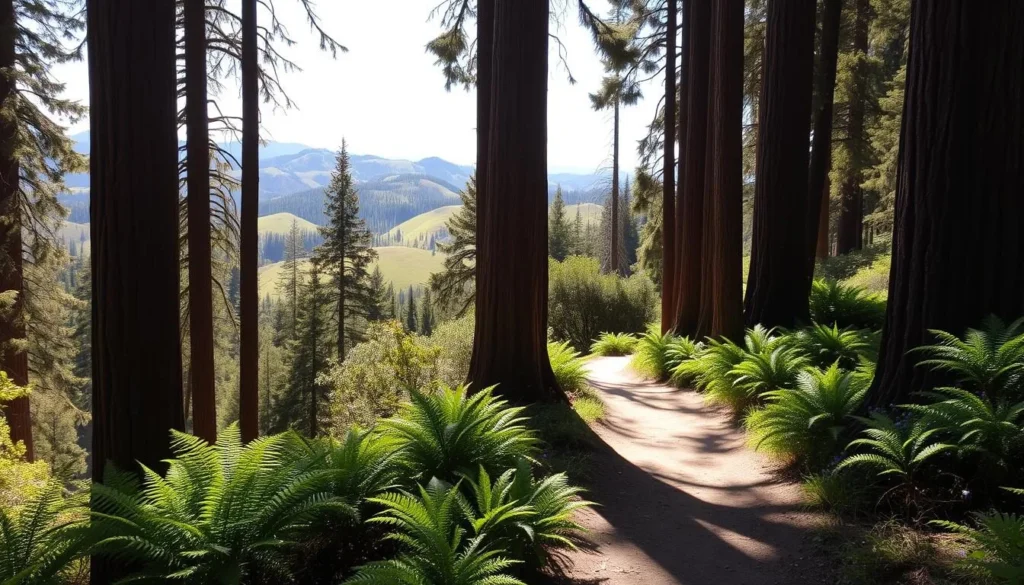
Red Rock Canyon Trail Experience
The Red Rock Canyon Trail offers a more rugged hiking experience, with stunning views of the red rock formations. As you hike along the trail, you’ll notice the landscape changing dramatically, from shaded oak woodlands to exposed red rock formations. The trail is popular among hikers and mountain bikers, with designated directional rules to ensure safety. Be sure to take in the breathtaking views and enjoy the unique scenery along this moderate trail.
- The trail guides you through changing landscapes, from oak woodlands to exposed red rock formations.
- The trail is well-marked and provides a moderate hiking experience suitable for most fitness levels.
- As you progress, the tree cover thins, revealing stunning vistas of the red sandstone formations.
Wildlife and Rare Plant Viewing Opportunities
As you explore the Red Hills, you’ll discover a diverse range of wildlife and rare plant species that thrive in this distinctive ecosystem. The unique serpentine soil and varied landscapes create a haven for nature enthusiasts and scientists alike.
Spotting Native Wildlife
The Red Hills Mountains are home to a variety of native wildlife, including species that are adapted to the area’s unique conditions. While hiking or biking through the trails, you may catch a glimpse of these animals in their natural habitat. It’s essential to respect their environment and keep a safe distance to ensure both your safety and the well-being of the wildlife.
Seven Rare Plants Found Nowhere Else
The Red Hills are renowned for their rare plant species, with seven plants found nowhere else in the world. These include the Red Hills vervain and Red Hills ragwort, which are exclusive to the wet areas around creeks and springs. Other rare species like the Rawhide Hill onion, Red Hills soaproot, Mariposa cryptantha, Congdon’s lomatium, and Layne’s butterweed can be found in upland locations. Visitors can observe these plants in designated viewing areas along the trails, where mountain biking and other activities are allowed as long as they are compatible with conservation efforts.
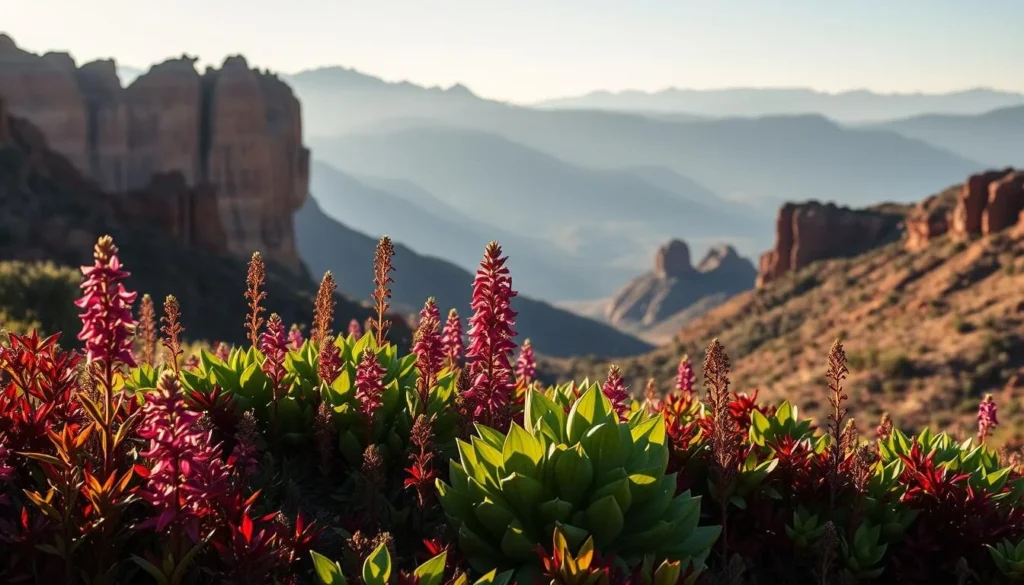
Spring is a particularly spectacular time to visit, as the hills come alive with vibrant wildflower displays. Educational signage along the trails provides insights into the unique characteristics and importance of these rare plants, enhancing the overall experience for visitors.
Essential Visitor Information for Your Red Hills Adventure
To ensure a smooth and enjoyable experience, familiarize yourself with the guidelines and regulations for visiting the Red Hills ACEC. The area is designated for day-use only, with no camping permitted on public lands. You can enjoy various activities such as hiking, horseback riding, and birding. Basic facilities include restrooms and picnic tables.
When planning your visit, note that there are no entrance fees, but a Special Recreation Use Permit is required for competitive or commercial activities. The nearest town with amenities is Jamestown. Be prepared with sufficient water, sun protection, and appropriate footwear. For safety, be aware that first aid is limited, with the nearest hospital in Sonora.
The above is subject to change.
Check back often to TRAVEL.COM for the latest travel tips and deals.
